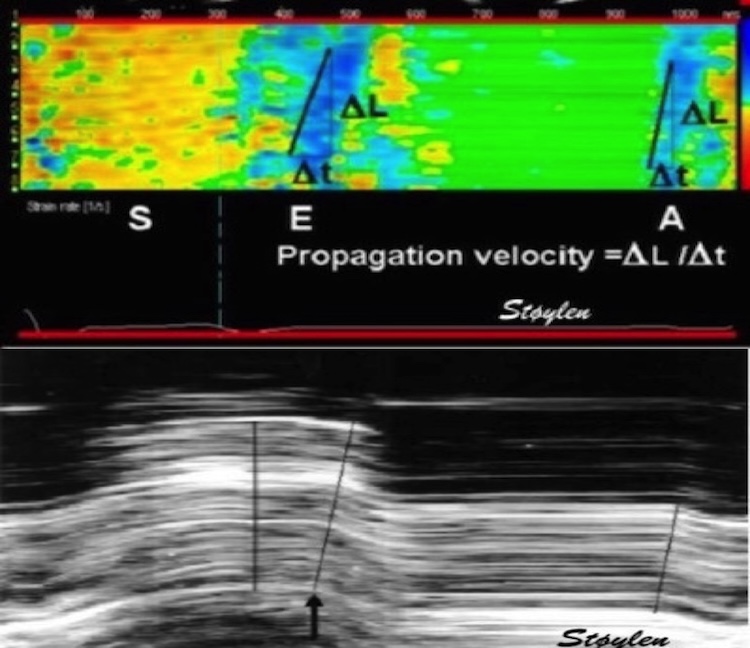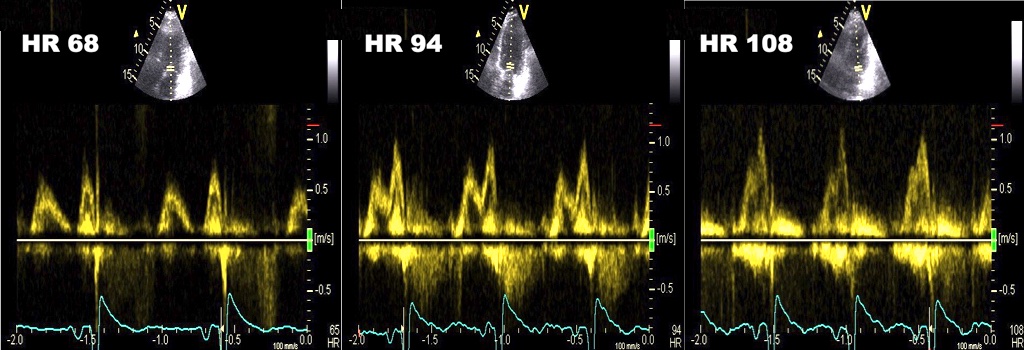#Cardiotwitter, thread no IV on mitral annular dynamics, still in the ejection phase, going rom early to late ejection (which was defined already by Wiggers). 

1/ Early ejection measures;, peak flow velocity, peak annular velocity and peak global SR are all afterload dependent, by the peak determined by the early termination by the rise in afterload. Thus, peak velocities (or acceleration) are not measures of peak force. 

2/Peak strain rate is velocity normalised for length apical velocity is near zero, they are equivalent in terms of contractility and load. 

3/Even though strain rate is normalised for heart length, this do not give a better normalisation to body size, contrarywise, it increases the BSA dependency, and do not reduce biological variability. strain rate should be reserved for regional function. ncbi.nlm.nih.gov/pubmed/32154940
4/As ejection continues through the whole phase, the volume decreases, the wall shortens, despite the second part of the ejection phase has decreasing tension (relaxation), Thus we have myocardial shortening, but at the same time relaxation. 

5/The end ejection measures are SV, EF, MAPSE and GLS. They are all closely related to the total ejection (but not pressure) work performed by the ventricle during the ejection phase, and they are all afterload dependent to the same degree. 

6/As peak strain is annular displacement normalised for length, the apical displacement being near zero, they are equivalent in terms of contractility and load. 

7/ Even though strain is normalised for heart length, this do not give a better normalisation to body size, contrarywise, it increases the BSA dependency induced sex dependency, which is is only due to body size. Strain should be for regional function ncbi.nlm.nih.gov/pubmed/29399886 

8/Why is this? Annular displacement contributes 60 to 80% to the total stroke volume. Ventricular diameter and length increase proportionally with BSA openheart.bmj.com/content/3/2/e0…
Thus, even with equal MAPSE, a larger ventricle has larger SV. So MAPSE is less BSA dependent.
Thus, even with equal MAPSE, a larger ventricle has larger SV. So MAPSE is less BSA dependent.

unroll @threadreaderapp
• • •
Missing some Tweet in this thread? You can try to
force a refresh














